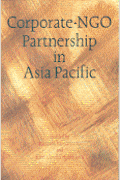Click to download the Spanish language version (PDF).
Last week, Chicago Mayor Rahm Emanuel and Mexico City Mayor Miguel Mancera entered into a first-of-its-kind city-to-city agreement. This was not a typical Sister Cities cultural exchange pact. The Global Cities Economic Partnership instead plans a series of joint initiatives in trade, innovation, and education to increase employment, expand advanced industries, and strengthen overall global competitiveness.
This Chicago-Mexico City partnership, inked at a forum in the Mexican capital sponsored by the Global Cities Initiative: A Joint Project of Brookings and JPMorgan Chase, sets a new standard for how cities must work together. As the world economy becomes increasingly integrated, so too does the network of cities and metro areas that form its backbone. As with business, the mayors and regional leaders who forge success will be those who fashion strategic partnerships with their natural trading partners to improve the flow of ideas, investment, talent, and goods and services between their markets.
Chicago and Mexico City are prime candidates for such an alliance. These two giant markets are highly interdependent economies today. More than $1.7 billion of locally-produced products are traded between the two, making each city among the top North American trading partners for the other.
Of that trade, 38 percent is in advanced industries led by electronics, machinery manufacturing, and pharmaceuticals. About 130 Chicago-based firms, such as Abbott Laboratories, Baxter International, and Motorola Solutions, have opened operations in Mexico City, demonstrating how businesses have already acted on market opportunities there to access new customers or new suppliers. Furthermore, nearly 290,000 business travelers and tourists fly between Chicago and Mexico City per year, reinforcing the economic ties that bind them.
There are cultural ties here as well. For generations, Mexicans have moved to Chicago, making the Chicagoland area the second largest home of Mexican-born immigrants among U.S. metro areas.
Mexico City’s secretary of economic development, Salomon Chertorivski, notes another important observation: Chicago and Mexico City also share a similar economic story. These two cities, once industrial giants, got knocked off-balance by de-industrialization. In the aftermath, both cities have transformed into diverse service-oriented economies and headquarters centers of global firms. Yet, both cities remain a work in progress. Together, through this partnership, Mexico City and Chicago can drive a common future, as vibrant global cities and North American hubs for innovation with global reach.
Though metro areas themselves do not trade, their firms and institutions do. Fundamentally, city and regional leaders can create the conditions to nurture the growth of competitive industries located in both markets.
There are a number of ways Chicago and Mexico City might capitalize on their shared trade flows, cultural ties, and economic history.
For instance, Emanuel and Mancera, and their regional partners, can help small and midsized firms in priority industries find more customers in each market, expanding exports. To build on the momentum of reshoring to North America, they can streamline permitting and procedures to facilitate foreign investment, especially for firms interested in simultaneously locating and expanding in both markets. Their community colleges or universities can create a common training program to ensure a steady supply of skilled workers in both cities so firms in shared industries, like electronics and pharmaceutical manufacturing, are competitive in both markets.
Indeed, Chicago and Mexico City’s comprehensive partnership can learn from the targeted strategies some innovative state and city leaders are pursuing with their global economic partners.
-
- San Francisco’s ChinaSF initiative has worked with its offices in Shanghai, Beijing, and Guangzhou to help 30 primarily high-tech companies set up U.S. headquarters in San Francisco, as well as help Bay Area companies make connections in China.
-
- Arizona State University has deepened greater Phoenix’s ties with Monterrey through an industry-focused partnership with Tec de Monterrey, which has led to joint master’s degree programs in aerospace logistics and the creation of a Global Institute of Sustainability that examines cutting edge approaches to regional water management issues in both markets.
-
- And the state of Queretaro has forged a partnership with global aerospace firms, such as Bombardier, and local universities in Mexico, Canada, and the United States to ensure their economic anchors have the skilled workers and supply chains to succeed across North America.
Mexico City and Chicago have taken their Sister Cities partnership to the next level. From culture to markets, Mexico City and Chicago have set the new standard for the modern day city-to-city relationship. Other metro areas must follow suit, customizing strategies with the global partners that make most economic sense for them. This is the path to creating a strong network of trading cities that drive the global economy.









Commentary
Chicago and Mexico City Cut New Kind of Trade Deal
November 18, 2013